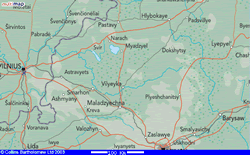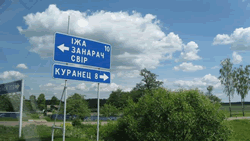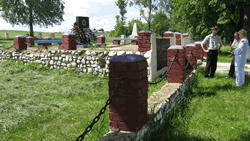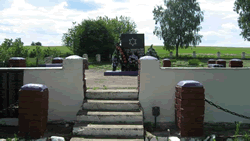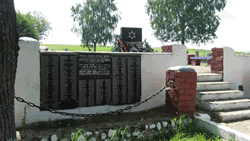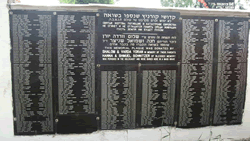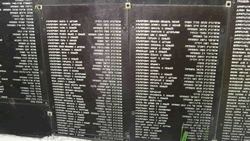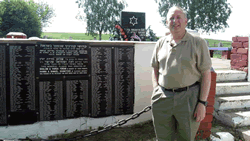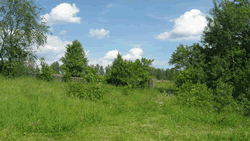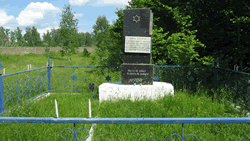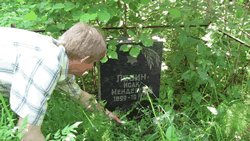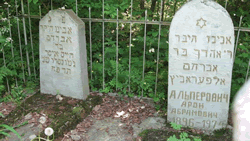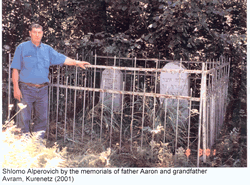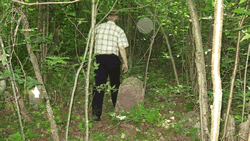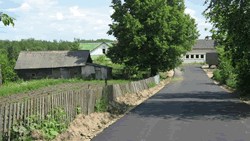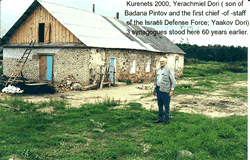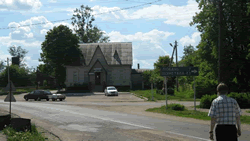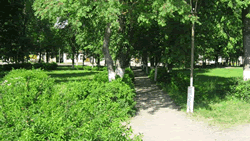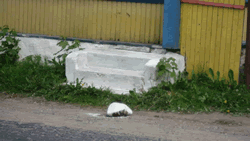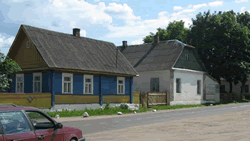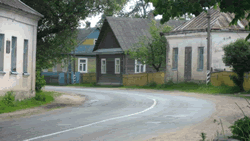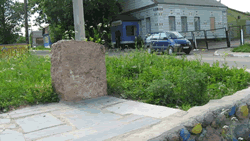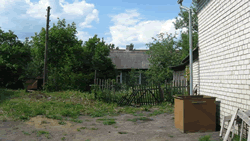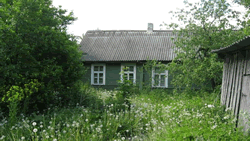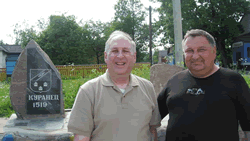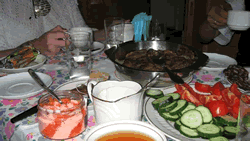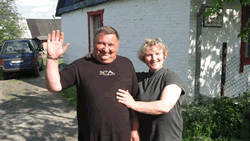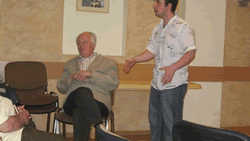Dear Eilat:
Here are some narrated photos of my trip to Kurenets. Thanks for all your help and encouragement. It was a great trip. I incorporated some of your photos in the narrative for illustration purposes.
Best regards,
Gene Alpert
Here are some photos from my trip to Kurenets in Belarus, birthplace of Batia, Martin (Moische), Fanny (Feige) and Ida (Ette) Alpert (Alperovich), the children of Yankel Alperovich (Jacob Alpert) and his wife Taube.
Kurenets is not shown on this map, but it is located between Narach in the north and Vilyeyka in the south. Narach was once called Kobylnik, which is where the Lewitan family is from. The Lewitans were related to the Yankel Alperovich family and when Martin Alpert came to the US in 1903, he lived with the Lewitans (who changed their name to Levine) in Shenandoah, PA. Most of them later moved to Norfolk, VA.
Smarhon is where Batia Alpert moved to, along with her father, when she married Mordechai Ancelevich. When Ida Alpert came to the US in 1913, she listed her father as living in Vilyeyka. During WWI, Jacob Alpert took Batia and her family to Kharkov (in Ukraine) and later returned to Smarhon. Many people from Smarhon went to Kharkov during the war because it was also known for its tanning industry, as was Smarhon.
The road to Kurenets.
The memorial to the Jews of Kurenets who were killed by the Nazis. The elderly man in the middle is the caretaker who receives a small sum from a man in Israel ( Shimon Zimerman, the head of the Kurenets society and Kfar Haarif) to keep the memorial mowed and clean. The young man on the left is a teacher in the village and the lady was my guide/interpreter for the trip to Belarus.
Another view of the memorial.
The list of those who were killed.
The third and fourth columns are almost all Alperovich.
Notice the two tablets are almost all Alperovich.
An Alperovich returns to his roots.
On to the cemetery. It was located on the other side of the railroad tracks, down the street from the synagogue.
The Kurenets cemetery memorial in memory of the 54 Jews who were shot here. Notice the stone wall in the background. The cemetery was once quite large. Tombstones can be found in the woods to the right.
See the tombstones in the overgrown cemetery.
The tombstone on the right looks like Alperovich in Russian.
In fact it is. This photo is from the Kurenets website: http://www.eilatgordinlevitan.com/kurenets/k_pages/scenes_new.html
Graves throughout the foliage.
Along the left side down this road is where the Kurenets synagogue was located. It was burned down by the Nazis. It was likely that most records were lost as a result.
This photo is from the Kurenets website. http://www.eilatgordinlevitan.com/kurenets/kurenets.html
A new structure next to an old one, where the synagogues were.
This is the "main" intersection in Kurenets. We drove in from the street on the right. The green area on the right where the sign is located is now a village green. But it used to be the Jewish market square.
Here's a view of the market square (actually a circle and now village green). The street to the synagogue and cemetery is off to the right. There used to be buildings on the market square. This was a popular market town and this was the junction. Off to the right were rows of houses lining the streets.
There once were many Jewish shops in this market area. People came from far and wide to trade at this market center.
Here is an example from a Kurenets picture ( from c 1917) of what those houses looked like. The only remnants are the stoops from the houses. The concrete stoops were common with the Jewish houses.
See how the stoop is part of the foundation of this house. A Jewish house once stood on this site.
Here's a larger photo of the house with the stoop to nowhere.
A typical street scene in Kurenets.
This house looked like it had been here for a long time.
At the main junction there is this monument. The one on the left commemorates the founding of the city and the stone on the right is from the synagogue as a reminder of the presence of the Jews.
Here's a closeup of the synagogue stone.
Here is a photo of the house owned by Eilat Gordin Levitan. (Her grandfather was born here in 1901. He was the son of Frada Alperovitz and Mordechai Gurevitz. In 1941- 1942 there was a Jewish resistance cell in this house).
A closer view of the house.
The mayor of Kurenets, Viktor Ulizky, meets a visiting Alperovich.
Viktor and his wife invited me to lunch. Those are freshly handmade potato latkes.
I passed on the caviar, but everything was delicious.
Goodbye to the mayor and his wife.
